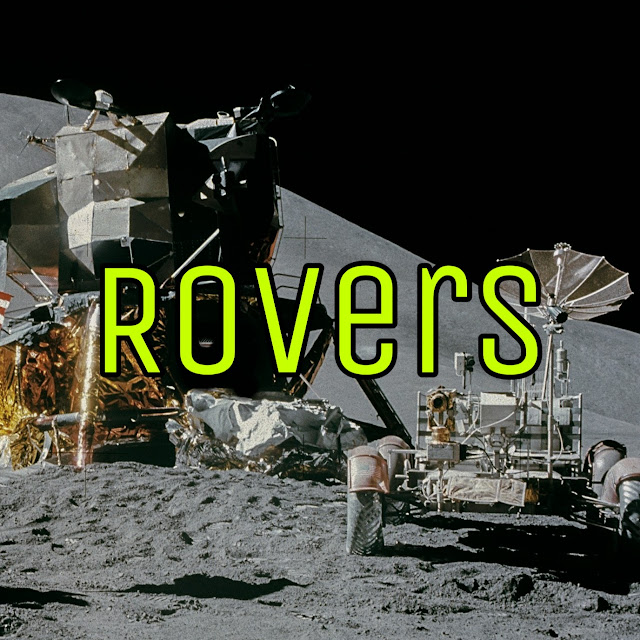Rovers

Rovers are very useful devices used at remote places which are either harmful to humans or are not reachable by us at present. They basically perform all tasks which are to be performed by humans. They can be eyes, hands, ears and legs of humans in any place. If programmed they can perform all actions by themselves or they can be controlled by humans. Over years rovers were used in many places whether it is bomb diffusing or planetary surface exploration. For now we will discuss rovers used for planetary surface exploration.
This device is typically designed to land on another planet or other celestial body and move across on a solid surface. Some rovers are designed to carry humans while others are autonomous robots. Lunar Roving Vehicle(LRV) was a rover designed for astronauts of Apollo 15, 16 and 17 for mobility on the moon, they are also known as ‘moon buggies’. Lunokhod series, Curiosity, Spirit and Opportunity are the examples of autonomous robots used for scientific research and planetary exploration by taking pictures of the surface and performing various tests.
Here are some briefs of rovers, that helped humans to discover some unknown facts and opened a new chapter of discovery.

Lunokhod 1 was the first lunar vehicle and the first wheeled-craft launched by Soviet Union to land on the Moon successfully after the failure of Lunokhod 0. It was the first remote controlled robot rover to move across on another astronomical surface other than the Earth. It was equipped with antennas and television cameras to capture pictures of the lunar surface, it was also equipped with special devices to analyse lunar soil.

Sojourner was the first rover launched by NASA to rove across another planet. It was a part of Mars Pathfinder mission, it had solar panels so it could charge batteries during the day, front and rear camera and hardware to conduct experiments. Mars Pathfinder landed on july 4th, 1997 with the help of a parachute, solid booster rockets and a large airbag to avoid damage while landing on the surface. After landing it deployed Sojourner (Just like throwing your cell phone with a huge layer of bubble wrap on it).

As time passed nations like China and Russia started sending their own rovers to the Mars. Rovers like Opportunity and Curiosity were sent to the red planet carrying scientific instruments to study it. They have made many discoveries since then. Curiosity rover is still operational till the present day helping to determine whether Mars could ever have supported life; in the past or present. Tianwen-1 is China’s recent mission to Mars consisting of a lander and rover.

Perseverance is a Mars rover built by NASA and was launched on July 30 2020, Besides the rover, for the first time in space exploration NASA will test its helicopter named Ingenuity to find locations for Perseverance to study. Perseverance is quite similar to Curiosity, but this time it is equipped with 23 cameras and 2 microphones which will help to record the sound on Mars for the first time. If NASA succeeds in this mission as well as in upcoming missions then it is possible that soil samples from the red planets can be retrieved. It is expected to land on the Martian surface on February 18, 2021.

India also launched its own lunar mission Chandrayaan-2 including Vikram lander and Pragyan rover which were developed in India but crashed on the lunar surface due to a software glitch according to the report. India is looking forward to conducting another mission to successfully land on the lunar surface and to check the abundance of water on the moon.
If by the help of rovers we discover any traces of life then it would be a game changing discovery and soon we can send the first human team to Mars. Though such advancement in technology still there are many areas which affect the life-duration of rovers. Due to sandstorms on Mars rovers need to be strong and the weight of rovers is also to be kept in mind, tyres of rovers are most challenging as they suffer frequent collisions due to rocky surfaces. With development of advanced ion engines or any other propulsion system we can send rovers to planets far away from the Earth. Development of the rover is under process which will land on the surface of Venus.

Comments
Post a Comment
If you have any question, please let me know.